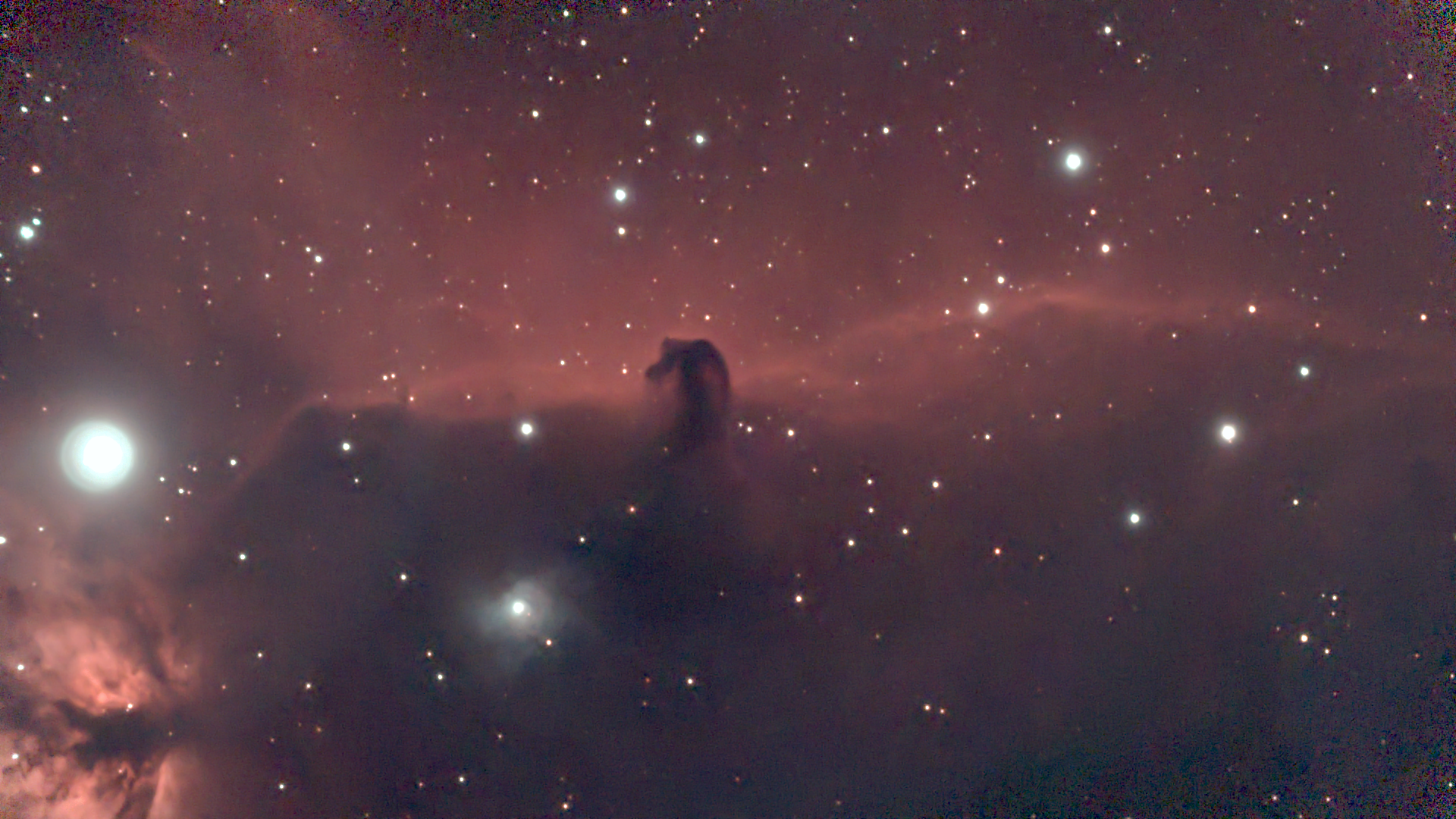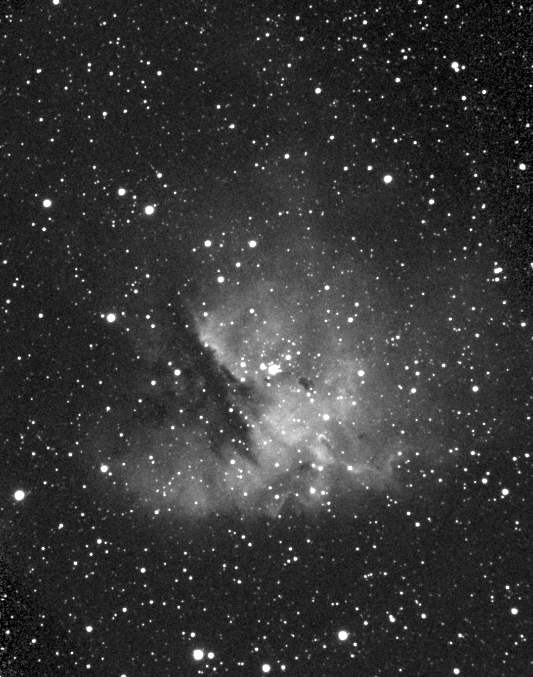𝐀𝐧𝐧𝐢𝐦𝐞 𝐖𝐨𝐧𝐠 on Nostr: Barnard 33- The Vaush Nebula. Continuing with objects discovered by the famous ...
Barnard 33- The Vaush Nebula.
Continuing with objects discovered by the famous Southern astronomer...
Situated on the leftmost star of Orion's belt lies one of the well-known nebulae in the Orion molecular cloud complex. Notable for a distinctive dark cloud resembling a horse's head... it appears quite dramatically in photographs, when compared with the challenge of spotting it through even the largest telescopes. Unfortunately, unless you happen to have special eyes that can see in the near Infrared, it's impossible for us to B33. Meanwhile, the nearby Flame Nebula (lower left) is visible to the human eye as a faint hamburger-like patch... really a missed opportunity to not name it the Hamburger Nebula.
The designation "Barnard 33" originates from a catalog of "dark objects" discovered by E.E. Barnard. These are not holes or "patches of nothing", but incredibly dense clouds obstructing light. Being black on black, their discovery relied on long-exposure photography, a technique pioneered by Barnard himself, driven by the motivation to unveil these Dark Nebulae.

Continuing with objects discovered by the famous Southern astronomer...
Situated on the leftmost star of Orion's belt lies one of the well-known nebulae in the Orion molecular cloud complex. Notable for a distinctive dark cloud resembling a horse's head... it appears quite dramatically in photographs, when compared with the challenge of spotting it through even the largest telescopes. Unfortunately, unless you happen to have special eyes that can see in the near Infrared, it's impossible for us to B33. Meanwhile, the nearby Flame Nebula (lower left) is visible to the human eye as a faint hamburger-like patch... really a missed opportunity to not name it the Hamburger Nebula.
The designation "Barnard 33" originates from a catalog of "dark objects" discovered by E.E. Barnard. These are not holes or "patches of nothing", but incredibly dense clouds obstructing light. Being black on black, their discovery relied on long-exposure photography, a technique pioneered by Barnard himself, driven by the motivation to unveil these Dark Nebulae.
quoting note1lk2…n05xNGC 281 - The Pac-Man nebula.
I couldn't track down who gave it the name "Pac-Man", but this nebula, located in the constellation Cassiopeia, was discovered in 1883 by American Astronomer Edward Emerson Barnard.
Barnard is a name that comes up a lot in in observational astronomy, yet at the same time I think he's wildly under appreciated. Barely any astronomers I know are aware of him, and he has no good biography, yet he's probably also the greatest observational astronomer in history, and at least one of if not the greatest visual astronomer.
That he became an astronomer at all is a bit remarkable and a stroke of luck. He was born in Nashville during the Civil War. Raised without a father, he was unable to go to school, and instead forced to work to provide for his mother. It was a chance job working to develop film that sparked his interest. He was the last person to discover a moon around another planet visually, the first person to discover a comet through photography, he discovered the second closet star to Earth, he was pioneer in astrophotography, probably the first to do wide field survey's of the sky, and the list goes on. The breath of his work is actually kind of staggering.
At the same time, so was his attention to detail on the things he worked on. All of the images he took required him to manually guide his telescope for hours. The level of endurance to do this is somewhat hard to imagine. Most observatories are high altitude, and all observations mean being out at night. Low oxygen and very low temperatures are hard to cope with, as is spending an hour or more constantly adjusting the position of a telescope.
This image took me an hour, is composed of hundreds of little frames, all guided by a computer. Meanwhile, he had to spend hours or more on a single frame. Any slip up and the frame (and night) could be wasted.


